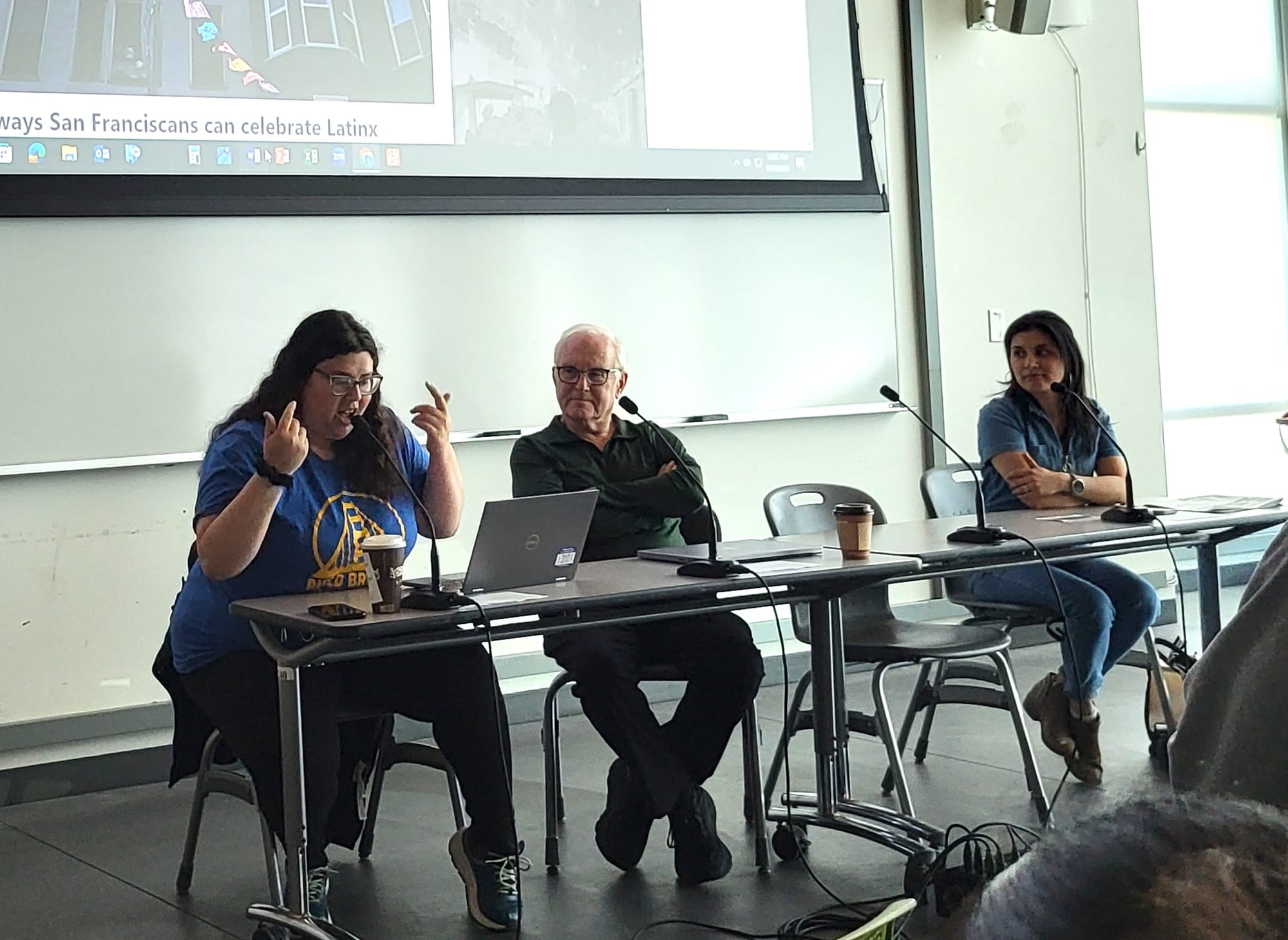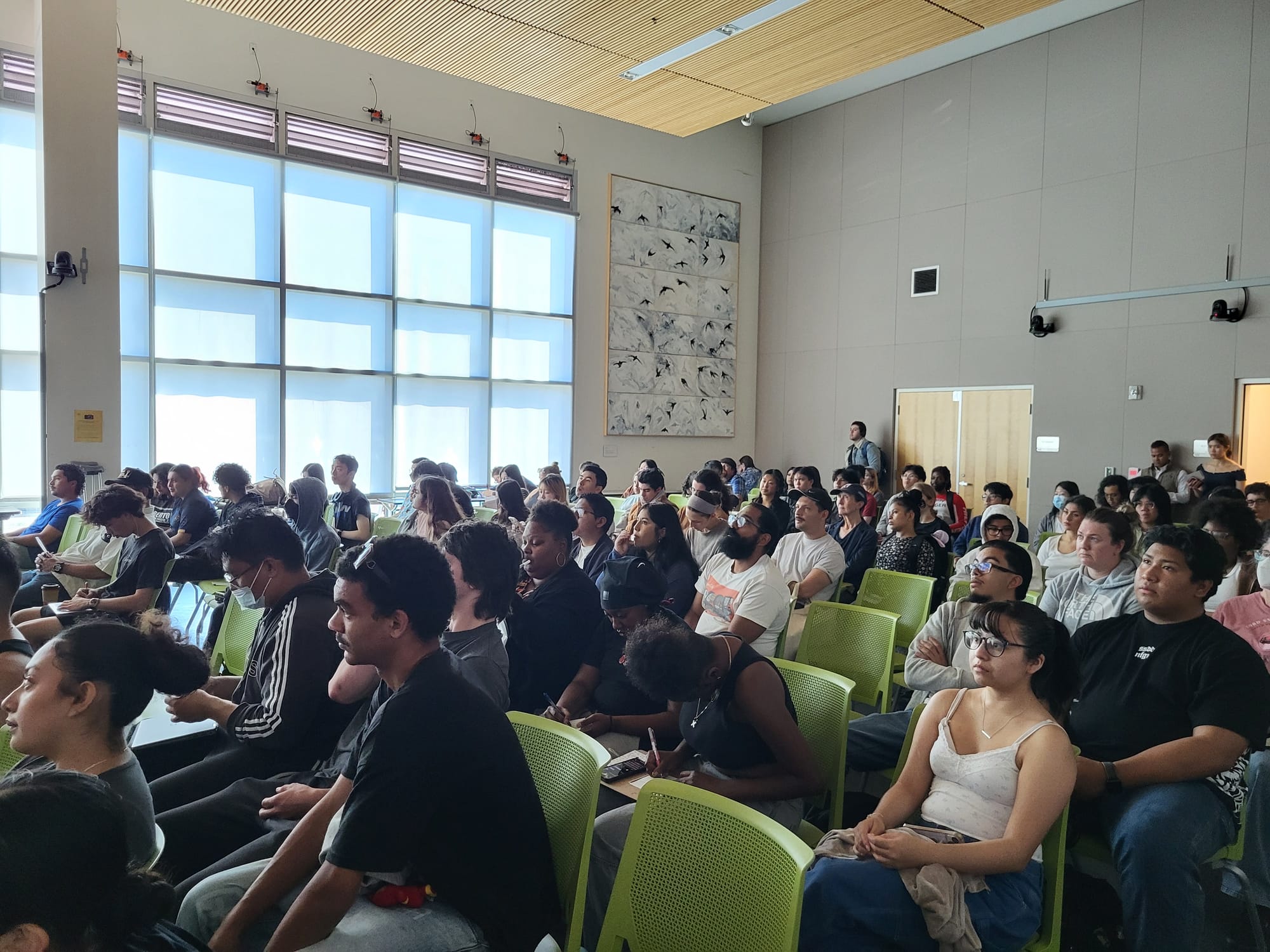🟧 A Critical Clinic You've Never Heard Of // Delivery Driver Dies
Plus: Bicyclist killed on Alemany Boulevard ID'd, and $180 million City College arts center gets the greenlight.
City College of San Francisco owning the apartment-sized scale model of the city would add to its impressive public art inventory.

A packed panel discussion on Tuesday at City College of San Francisco focused on the 900-square-foot wooden scale model created in the 1930s by the Works Progress Administration — and what it will take to bring it out of storage.
Guest speakers included Angelica Campos, a student of museum studies, The Living New Deal founder Dr. Gray Brechin and Executive Director of Acción Latina Fátima Ramirez. The discussion was moderated by the San Francisco Scale Model Initiative’s own Leslie Simon, a longtime Women’s and Gender Studies Department instructor.
While it has been displayed a few times across the city, including a stint at the Museum of Modern Art in 2019, the model is currently in a warehouse. It was originally supposed to have a permanent home in City Hall in 1940 but due to World War II, the administration repurposed the display room and placed the model in storage.
Brechin has played a hand in shedding light on the model — pulling it out of deep storage — and knows its value to the public.

“I also cleaned the Cow Palace,” he said. “That was a WPA building and McLaren Park was largely a WPA project so it's really a great way to just get to know a city that no longer exists.”
If it makes its way to the college, its proposed permanent location would be inside the Student Union building’s Upper Level Lounge, which would require some construction to fit the model and make the space ADA-compliant.
Some proposed benefits shared at the discussion included contributing to the “student zone” starting at Cloud Circle’s western end with the new Student Success Center, using it as an educational tool with an opportunity for field trips creating more foot traffic on campus, being a tool to bridge the city’s cultural districts together and being used as a resource for patrons to think about space and history throughout the city.
“Many of those research centers that would be there are going to be moving on and now there's room for a new revisioning of what this space could be that would benefit students,” Campos said.
Panel attendees at Tuesday’s appeared eager to learn about the model's history, asking the panel what their favorite portion of the model was, what locations they were surprised to see that were now gentrified and how the designers were able to create the scale model in the 1930s.

Anita Martinez, vice president of the college’s Board of Trustees, asked if the model would be visible from the outside and if the display would be lit up. Simon responded yes.
Simon first shared the proposal to CCSF’s Participatory Governance Council in November last year which attendees had mixed reviews on due to costs and the notion that it would be another example of the college supporting white-centered art over art from diverse communities.
In August, Vice Chancellor of Student Affairs Lisa Cooper Wilkins shared a proposal for the Student Union Building that didn’t include the scale model.
The college’s student-run newspaper, The Guardsman, quoted Simon saying the team was still committed to seeing the project through and raising the necessary funds.
Simon said the transfer of ownership from UC Berkeley and the creation of an endowment fund are secondary to the need for student support.
“We need the college to commit and we need the donors to contribute,” Simon said. “I will say that there's been a lot of student interest, staff interest [..] but we need the whole college community to jump in.”
We deliver neighborhood news, events and more every Thursday.